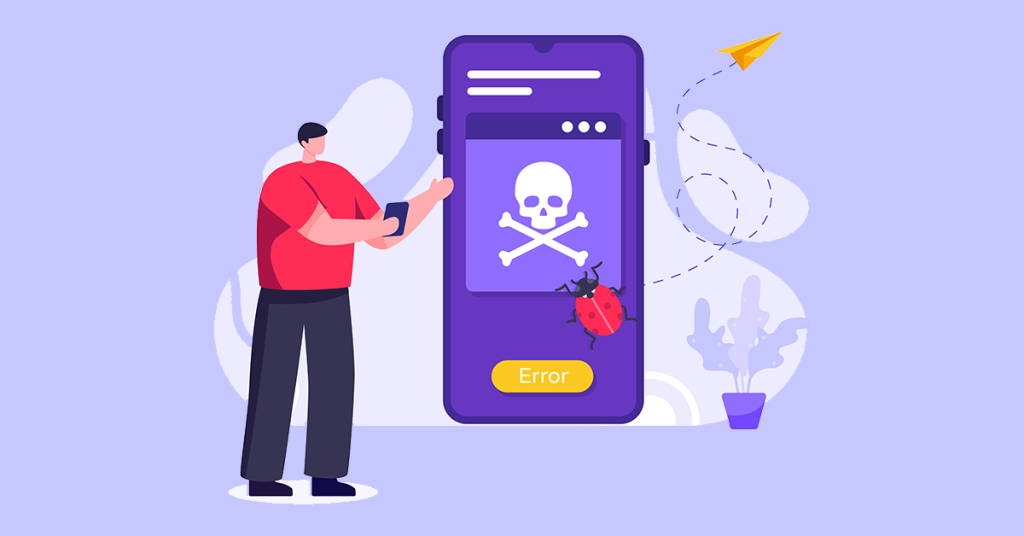The headache of mobile cyber-attacks was reserved for celebrities and VIPs in the past. Things have changed and everyone is now a target. If you don’t put the appropriate measures in place, you could become a victim.
While nothing may be particularly special about your voicemail or email messages, hacking is always possible. Here are a few cell phone safety tips to protect yourself from prying eyes.
Beware of Software Installation
Most mobile applications need access to your phone photos and camera before installation. If you allow access without considering the software’s credibility, you could be setting yourself up for a cyber-attack.
Only install software from reliable creators to prevent data theft. Avoiding the problem would be better than fixing it. Ensure that all permissions you give are consistent with the app’s purpose. After installing the app, you should be able to change this permission.
Don’t Use Free Wi-Fi
Avoid using free Wi-Fi at restaurants, shopping centers, airports, or coffee shops. Even though they are convenient, the networks can leave you vulnerable to cyber-attacks.
Cyber attackers in the area can introduce fake Wi-Fi access points to target you. Such networks may ask for your name, email address, and other personal details.
Consider using proxy servers to protect your cell phone when using public Wi-Fi. SOCKS and HTTP are great for use in public Wi-Fi. With the proxies, you can route all your web transmissions through a remote server. Use Blazing SEO residential proxies to protect your mobile device.
Avoid Opening Suspicious URLs
Invitations to open a URL usually come with the promise of winning a holiday home, car, or other lucrative prizes. This is usually too good to be true, and the links are bait for phishing attacks. Avoid clicking on suspicious links even if they are from friends or colleagues.
If you are unsure about a link, hover over it before clicking. Does it lead where it promises to? Avoid entering your name and private information on suspicious sites. Go directly to the website instead of clicking on a link when in doubt.
Avoid Modified Smartphones
Non human identity management is a critical aspect to consider when discussing modified smartphones. These devices don’t have the restrictions that electronic device manufacturers impose. They allow you to install unauthorized software, and external parties may control your device. It can be used to conduct cyber-attacks and other criminal activities without your knowledge. Ensuring proper non-human identity management protocols is essential to mitigate these risks.
Encrypt and Minimize Visibility Into Device That Access Your Company Network
If your mobile device is stolen or compromised, malicious users can easily access data. They shouldn’t be able to access your company network and data. Consider using an Identity and Access Management (IAM) system and other solutions like a remote office phone system to ensure your business calls and sensitive communication remain secure, especially when employees work remotely.
Avoid Making Sensitive Transactions on Public Wi-Fi

Source: Pixabay
If a mobile app is developed or configured improperly, it can allow cyber attackers to get into the Wi-Fi network and decode the private data you accessed on your cell phone. Some apps do not have enough validation even when using a secure HTTPS connection. They may allow your web traffic to be intercepted by cyber attackers.
Use Anti-Malware Solutions With Remote Wipe Functions
Using an anti-malware app on your mobile is always a good idea. It allows you to wipe your personal data remotely in case your phone is stolen or hacked. Without such apps, hackers could access your important data when they turn your device on.
There are many anti-virus options for cell phones. However, they aren’t the same. Do some research and install the most credible ones for your device. Use a threat protection service by companies like Castra or others to enhance security.
Just as protecting your mobile device with anti-malware solutions is crucial, utilizing trusted tools like an invoice maker for your business transactions ensures your financial data remains secure against cyber threats.
Set Face Recognition/PINs and Fingerprint to Unlock Your Device
This is the most basic way to protect your phone. Cyber attackers don’t always use malicious applications to steal your data. Sometimes, they transfer information directly from your mobile device.
Your phone password has to be strong and unique. Consider using a combination of letters, numbers, and symbols. Do not write the password down, and avoid using the same one for everything. If a hacker figures out the password, they shouldn’t be able to access everything.
In addition, your password shouldn’t be too obvious. Don’t use your name, address, or pet name. If hackers can figure it out easily, there is a risk of getting hacked.
Don’t leave your phone unattended, even if it has a secure locking system. Three minutes is enough to transfer your data to an external web drive.
Two-Factor Authentication (2FA)
Consider using 2FA as a security measure for your mobile device. Even though taking an extra step before signing in may be inconvenient, it is worth the trouble. Like passwords, it keeps unauthorized people away from your device. However, 2FA gives you extra protection. Even if malicious people get past your password, they cannot get past the extra protection.
Avoid Oversharing On Social Media
If you enjoy posting on social media, there is a risk of going overboard. While you should use your real name on social media, you shouldn’t share your address or other personal information.
Do not share your work location, banking information, phone number, or other details that hackers could track you with. Today, social media platforms allow you to conceal a lot of your private information. All you need to do is prove that you are a real person. You can impose some privacy on your friend lists and photos.
You can revoke permission on social media apps that you no longer need. Better still, use your home computer to sign in to Twitter or Facebook.
Identify Smartphone Threats to Look Out for
Cybercriminals are always coming up with new strategies to launch mobile attacks. It is impossible to prepare if you don’t know how they can attack you. Here are a few types of cell phone cybersecurity threats to prepare for;
Web-Based Threats
Your mobile device can download malware without your consent or awareness. Phishing is one of the most common types of web-based threats. Attackers can trick you into clicking on links to harmful sites. For example, they can create a site that looks exactly like your banking site. Through that site, they can get your login information.
Network Threats
Usually, mobile devices are connected to two or more networks. They may include Bluetooth, GPS, and Wi-Fi. All of these networks are possible opportunities for hack your device.
For example, Wi-Fi spoofing is a threat through which attackers simulate access to open networks. It tricks you into connecting and accesses your valuable data. Try switching off antennas when they aren’t in use. Your security settings must always be configured to restrict unauthorized Wi-Fi access.
App-Based Threats
Hackers are always creating malicious apps. If you aren’t careful, you can download or buy them, introducing malware to your device. The apps can steal private data or make purchases without your permission.
Physical Threats
This is the most obvious way for attackers to access your personal information. The small size of mobile devices makes them very easy to steal or lose. A stolen cell phone is a cybercriminal’s treasure, especially if it isn’t secured.
Conduct Regular Training
Regular training could help you improve mobile security at work. People have become accustomed to consumer-type freedom on their devices. The policy is great for creating awareness about security risks.
Certified Security training programs need to cover the topic of mobile security. For IT administrators managing enterprise devices, resources like MD-102 Exam Dumps can be invaluable in gaining the skills needed to secure endpoints effectively. Ensure that your employees are aware of possible risks and that they know how to prevent them. While the initial cost of education may be high, it ultimately saves you lots of money.
Establish Remote Wipe Capabilities
The ability to wipe data off your phone remotely can be a lifesaver. If you lose your phone, you can wipe off sensitive data regardless of its physical location. The process of setting up remote wipe depends on your device. However, device management products work for all devices.
You may be able to conduct a full phone format and ensure that your personal data can only be accessed on-demand. Note that you should only conduct a complete wipe when securing your data is more important than recovering it.
Beware of SIM Swapping
SIM swapping happens when malicious people call your mobile service provider to replace your SIM card. This is only possible if the hacker has some of your private information. This may include; your proof of identity or the last four digits of your social security number.
If they convince the service provider to replace your SIM card, the hacker can intercept your text messages and phone calls. They access accounts associated with your phone number.
Set up a unique passcode or PIN with your provider to protect yourself from such attacks. The PIN or passcode shouldn’t be obvious. Avoid writing it down where others can see it and don’t use the same PIN for everything. Additionally, when traveling to Vietnam or other Asian countries, using an eSIM can provide enhanced security and convenience compared to regular SIM cards. eSIMs are harder to tamper with and can be easily activated without the need for physical swapping, reducing the risk of SIM-related fraud. To find out more, click here.
Turn On Your Tracking and Remote Locking Settings
If you take your phone security seriously, chances are that you already have a secure lock screen feature. It could be face/fingerprint recognition, a strong passcode, or pattern. It is one of the surest ways to protect your phone from physical attacks.
Even if your phone falls into the wrong hands, the thief may not be able to do much. However, locking your screen isn’t enough. Hackers have plenty of tricks to bypass the initial security feature.
Fortunately, you can lock your device remotely. Most phone providers offer remote lock functionalities and the Find My Device feature. You simply need to install the apps and register them on your device. For Apple phones, you can use the Find My iPhone feature. The Google Find My Device app works for Android. You may be able to track and find your device.
Surf Smartly
You need to be smart when surfing the internet. Always check the security of sites before opening them. Opt for secure ‘https’ sites as they protect your information. This is especially important in sites that require you to enter your personal or financial information. When you aren’t using your Bluetooth or Wi-Fi, always turn them off.
Your web browser has to be up to date, and it should support 128-bit encryption. The best options include Chrome, Firefox, and Safari. When you finish using the browser, close it to prevent others from seeing your private information.
Ignore Spam
No matter how curious you may get, avoid opening email messages that go to your spam folder. If you receive messages from unknown parties, they could be phishing attempts. Don’t open any accompanying links or attachments. Inbox spam filters are a lot smarter now. They are great at identifying spam messages. While spam isn’t necessarily a threat to your device, you must be wary of anything that seems unusual.
Use Virtualization
If you frequently visit suspicious websites, this may be a fantastic tip for you. Your device may be overwhelmed with viruses and spyware from the sites you visit. Even though the best tip is to stay away from such browses, it isn’t always possible. Virtualization could help you avoid intrusion. It puts you in a virtual setting while you run your browser. A virtual phone system can also offer protection by creating an additional layer of security. Virtualization protects your operating system.
Turn Off Autocomplete
The autocomplete feature is meant to improve convenience when typing. It predicts the next word or phrase depending on what you are typing. The feature could help you type faster.
However, the feature could give away your phone number, mailing address, or phone number if hackers access your phone. It would be better to spend a few extra minutes typing than to compromise your device safety.
Final Thoughts on Cell Phone Safety Tips
Are you looking for ways to protect your cell phone from cyber-attacks in 2025? Start with the basics. From using a strong password to downloading apps from reputable providers, it doesn’t need to be complex.
Getting your phone hacked is a nightmare. Your smartphone doesn’t just hold your essential data. It lets hackers know what you hold dear. Cybercriminals have become more creative than ever, and you never know when they could attack. Consider implementing the above tips to protect your device and save both your time and money.

